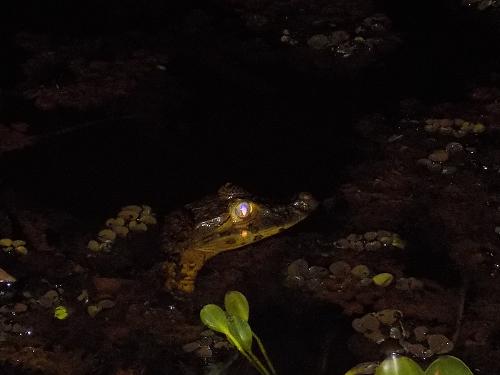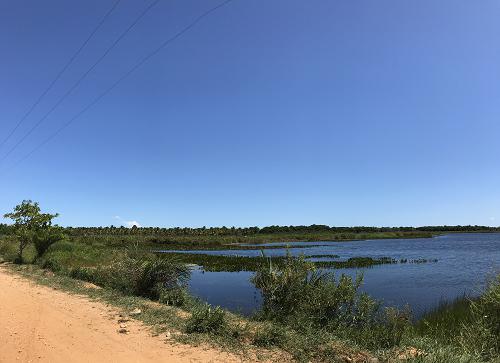Gabriela Mota Gama
The Brazilian Atlantic Forest is one of the world’s most ecologically diverse regions and one of the most threatened ecosystems in South America. The State of Alagoas Atlantic Forest is characterized by rich wetlands inhabited by broad-snouted caimans (Caiman latirostris), which are used intensively by local communities as food source. Drawing on successful projects in the Amazon, a new approach based on sustainable management of the caimans has the potential to bring multiple conservation and socioeconomic benefits. We propose to generate data to support caiman management as habitat conservation tool and socioeconomic development in the Marituba do Peixe Protected Area.

Young broad-snouted caiman in Marituba do Peixe reserve, Alagoas, Brazil (March 2020). © Marcos Coutinho
The Brazilian Atlantic Forest is one of the world’s most ecologically diverse regions and one of the most threatened ecosystems in South America. One way to engage people with local conservation is through the concept of sustainable wildlife management. These initiatives foster the involvement of local communities to protect natural habitats and managed species, generating long-term socioeconomic benefits and improving life quality. In vulnerable ecosystems, such as the Atlantic Forest, these benefits are particularly important because local communities are already negatively affected by diverse environmental impacts.

Marituba do Peixe reserve wetlands in the lower São Francisco River basin, southern Alagoas State, Brazil (March 2020). © Gabriela Gama
The State of Alagoas Atlantic Forest is characterized by rich wetlands inhabited by broad-snouted caimans (Caiman latirostris), which are used intensively by local communities as food source. Drawing on successful projects in the Amazon, a new approach based on sustainable management of the caimans has the potential to bring multiple conservation and socioeconomic benefits.
In this project we intend to generate data to support sustainable management of caimans as a habitat conservation tool in the 18,600 ha Marituba do Peixe sustainable use reserve in southern Alagoas Atlantic Forest. This project is organized to integrate data on key dimensions (caimans, caiman habitat, and local communities) to better understand the current ecological dynamics of caiman populations in the reserve and to quantify interactions of local communities with caimans and the caiman habitat.
Specifically, we will monitor: i) climatic variables, such as air and water temperature, water level, rainfall and salinity; ii) habitat types, and threats directly affecting them, based on both satellite image interpretation and field inspection; iii) caiman harvest by local communities based on interviews and field observations, and; iv) caiman population structure and demographic parameters by applying standard methodologies such as spotlight surveys, mark-recapture and nesting ecology.
Based on the above data, we will co-develop with the communities a proposal to conserve the caiman´s natural habitats through sustainable management. Likewise, the knowledge gained will be made available to public authorities in order to improve Atlantic Forest conservation strategies. ‘Learning by doing’ in the Marituba do Peixe reserve will provide valuable lessons that potentially allow the initiative to be scaled up and applied to other areas within the Brazilian Atlantic Forest.